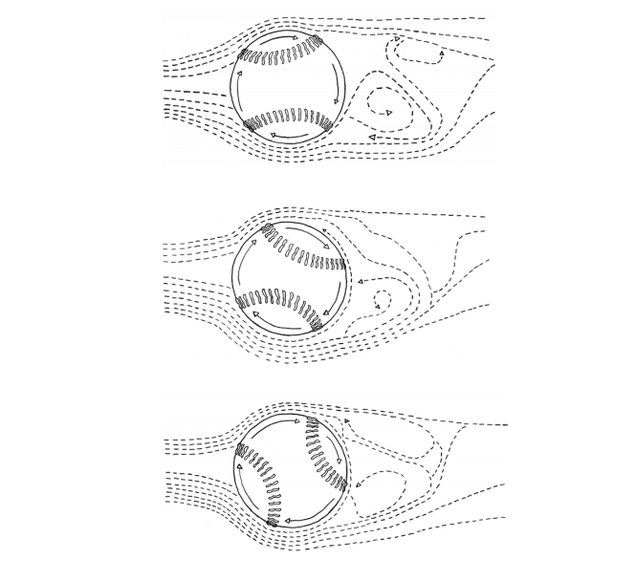https://encrypted-tbn0.gstatic.com/images?q=tbn:ANd9GcShwFJobIHI_ITJ5gwjPqsBQST4aDOzY4-FvMbRImDBnL1IzJ98cw
The knuckleball is becoming
more of a rarity thanks to its unpredictable motion,
and it is likely the most difficult pitch to throw
because of its awkward grip. However, the pitch can
be used with devastating effect if perfected.
Unfortunately, the specifics of a knuckleball’s
erratic motion are the least understood among all
pitches. What is certain is that the Magnus Effect
acts as a deterrent to the random movement of the
pitch. Ideally, the knuckleball will spin between
one-quarter and one-half of a turn before it reaches
the batter. The more a knuckleball spins, the more
it becomes comparable to a “slow” fastball, as the
Magnus Effect causes the ball to move in a
predictable direction.
